Hunting for a new home
The future of the humankind light-years far from the Earth
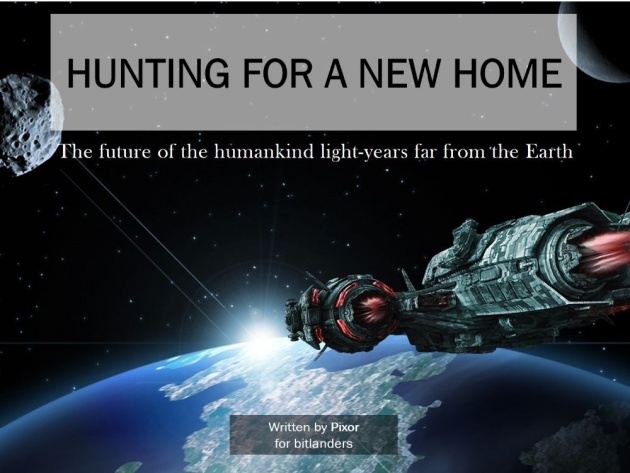
Image edited by Pixor. Original Image Credits: PixxlTeufel Via Pixabay
Hello, friends. Two days ago I found a channel that was transmitting a documentary by Stephen Hawking about the story, the evolution and the end of the Universe (don't worry, we still have billions of years before it happens), so today I want to tell you about the future of the humankind. Our lovely Earth won't be safe enough in the future to guarantee the survival of humans, so we have to find a new home as soon as possible and establish over there colonies and new Countries. As Sir Stephen Hawking said:
Our destiny is in the stars.
- S. Hawking
Why will we have to leave our Earth? What challenges will we face? What technologies should we develop?
These are the subjects I will talk about in this blog. Are you ready? Let's start.
Video Credits: melodysheep Via YouTube
Introduction: the Earth
1. The birth and the development of our planet
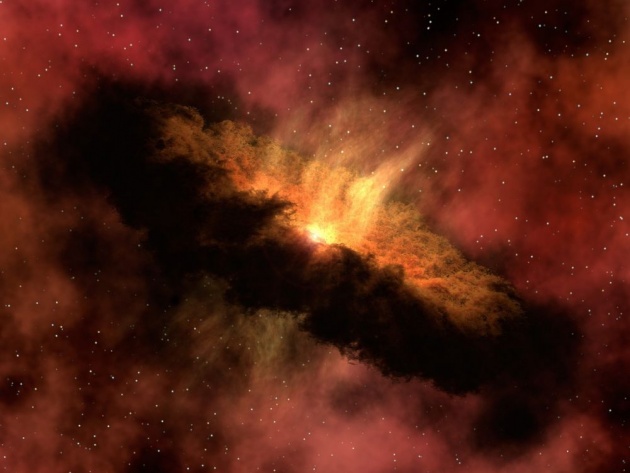
Image Credits: skeeze Via Pixabay
How was our home born?
Everything began with the explosion of a star that released in the space the elements it was made of and new more complex ones, which formed in the moment of the explosion. These elements formed a nebula. Each nebula has a different chemical composition, depending on that one of the star or the stars that died nearby; the nebula that led to the birth of the Earth contained nitrogen, oxygen, iron, silica, and all the elements our world is made of. Year after year, century after century, the gravity formed huge spirals of dust; in the middle of one of those spirals, a rocky planet started to take form. In 100 million of years, it attracted a huge amount of materials, like rocks, minerals, and metals, on its surface. The Earth was born.
2. The threats to the Earth
The Earth is constantly in danger, as the Universe is full of unpredictable events that could easily destroy it. Let's see what are the principal dangers that threaten the Earth.
1. Asteroids
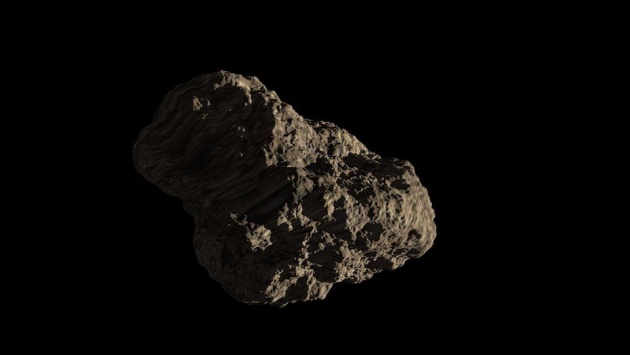
Image Credits: Abik11 Via freeimages
The remains of the ancient process that formed the Solar System are always traveling and the possibility that one of them hit our planet is real. When the Sun lit for the first time, it swept away an enormous amount of cosmic dust and debris which had accumulated in the area around it. This debris orbit now in the asteroid belt beyond Neptune. These objects travel along very wide orbits, attracted by the gravity of the Sun and, since they are a lot, the probability that one or more of them fall on the Earth is not negligible. Some asteroids are so big and dangerous that astronomers even gave them a name; this is the case of 99942 Apophis (from the name of the Egyptian deity of darkness and destruction), which has a diameter of 270 meters and a mass of 20 million of tons; it is traveling towards us at a speed of 45,000 km / h. If it fell on our planet, the impact would release an amount of energy almost equal to that of the entire world nuclear arsenal. Its trajectory is not yet clear but it is probable that on April 13th, 2029 it will pass to 37,000 km from the Earth's surface. Fortunately, there are little chances that it falls on Earth. There are, however, super-massive asteroids, some of them over 16 km long, like the one that crashed on Earth 65 million years ago, ending the era of dinosaurs. According to statistics, asteroids like that fall once every 100 million years.
2. Nuclear Wars

Credits: Daron Cooke freeimages
Another threat to life on the Earth does not come from the Universe but from men themselves. Continuous technological improvement can be a double-edged sword. We have learned to use nuclear reactions to produce weapons of mass destruction, chemical weapons, bacteriological ones and so on. Since humans are selfish and power-hungry creatures they could one day unleash a nuclear war, the definitive war, which will put an end to the life on Earth. The chances that a nuclear war could break out in one year are one in a million, but in the next one hundred thousand years, the possibilities will become one in ten.
3. Gamma Ray Burst
Every fifty years a star dies. There are "harmless" stars, which do not put our planet in danger and "dangerous" stars; in 1967, during the Cold War, a type of supernova was discovered, it has been called Gamma Ray Burst, which could seriously threaten the life on our planet. These stars, when they die, emit intense beams of gamma rays, the most powerful ones in the universe, with an immense energy. One of these stars is located in the system WR-104, at 8000 light-years of distance. Astronomers have observed that the star is releasing huge amounts of incandescent gas, as if it was dying. If so, at its death, it would produce two beams of gamma rays from the poles, emitting more energy than that produced by the Sun in all its life. It would be one of the brightest phenomena in the whole universe. If the gamma rays hit the Earth, the radiations would destroy the ozone and the ionized rays of the Sun would kill every single form of life.
4. The Sun
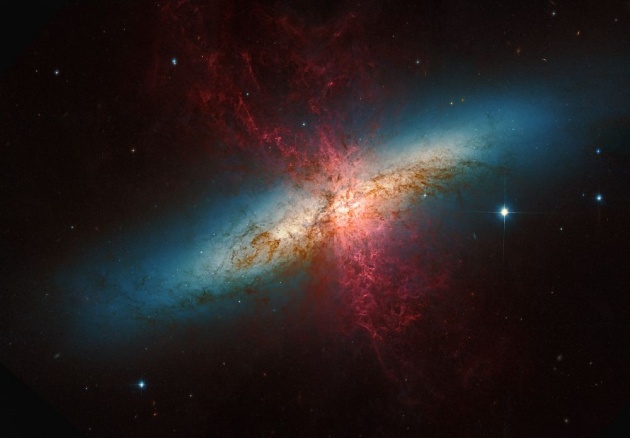
Image Credits: Adam Evans Via flickr
Finally, the Sun, which has allowed life to develop, will destroy it within four billion years. The heat of the Sun increases by 6% every billion years. In a few billion years the temperature will be so high as to transform the Earth into a lifeless molten ball of rock. Finally, when the Hydrogen will be over, the Sun will begin to expand, becoming a red giant, 200 times bigger than it is now. During the expansion, it will swallow Mercury, Venus and almost certainly the Earth. Finally, when the gravity will prevail over the internal thrust of the nuclear reactor of the Sun, it will explode and collapse into a brown, dull and cold dwarf.
These are the main reasons why if we want to continue to exist as a species, we must look for a new place to live in.
Eyes on the Universe
1. The celestial bodies of our solar system
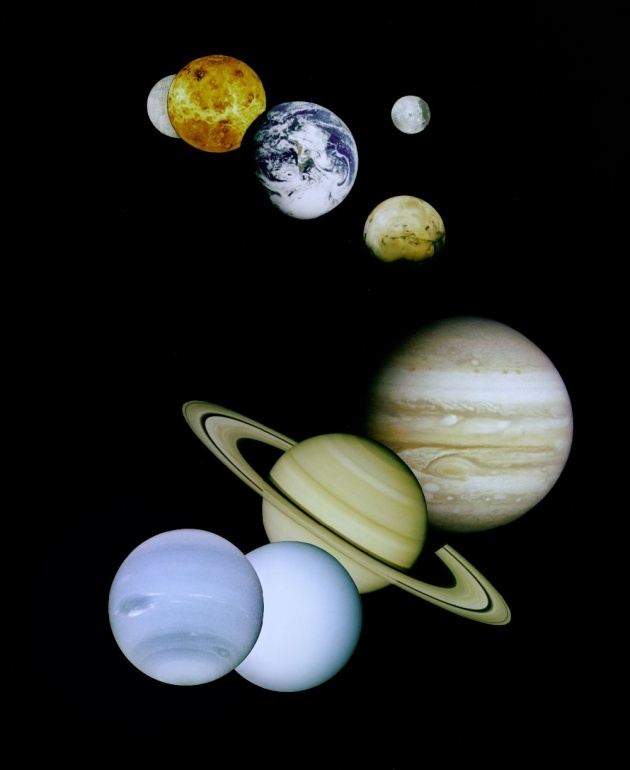
Image Credits: Freerange Public Domain Archives Via freerange
In our solar system, Mars and three moons are very interesting: Europa, Enceladus and Titan. These celestial bodies, in fact, possess three fundamental elements for life: organic compounds, a liquid and a source of energy. On Mars there is iced water at the poles and below the surface; in spring, it is possible to observe liquid water flowing on the surface of the planet.
The space probes Voyager and Galileo, since the nineties, have observed that on Europa, one of the moons of Jupiter, there is water trapped under a layer of ice, whose thickness is between 10 to 30 km and it's possible that under this layer there is a liquid ocean 100 km deep.
Titan and Enceladus are two moons of Saturn. Titan has an atmosphere composed mainly of nitrogen, like ours, and has liquid methane and ethane seas. Enceladus is very similar to Europa: it has an icy crust that hides an ocean below. Often, colossal jets of water, similar to geysers, rise for thousands of kilometers in space.
2. The exoplanets
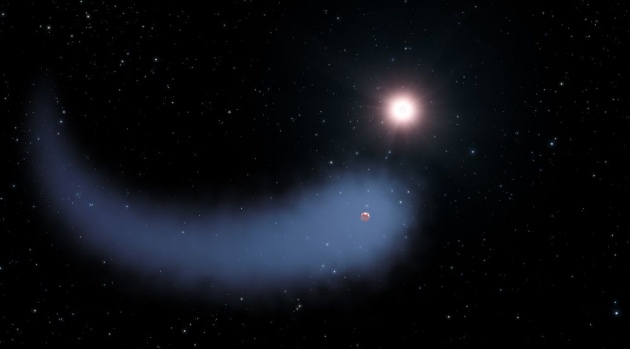
Image Credits: NASA Goddard Space Flight Center Via flickr
The most interesting exoplanets
One of the first persons who said that there are other worlds out there was the Roman Lucretius in his book "De Rerum Natura". Since 1992, astronomists started to observe the first exoplanets at a big distance from the Earth. The most of them were gaseous giants, orbiting around pulsar stars, i.e. pulsing stars that emit periodically intense beams of radiations. These planets are not suitable for life because they don't possess a rocky surface, don't have oxygen and water and the star around which they orbit invest them continuously with intense of X-rays and charged particles that wouldn't allow water to be liquid in a stable way. Furthermore, the weak brightness of the star wouldn't allow the terrestrial plants to do the photosynthesis and, consequently, to live.
With the advent of the Kepler space telescope, there was a real revolution in the search for planets outside our solar system.
- In 2007 scientists discovered Gliese-581d; it's a rocky planet that is seven times bigger than the Earth and it orbits around a star smaller and redder than the Sun at the right distance to keep the water in a liquid state stably. However, it's more than 20 light-years far from us (more or less, 190 billions of kilometers). In order to have an idea of such a distance, imagine to take the fastest vehicle ever created: the Voyager-1 probe, which after 20 years of explorations covered more than 20 billions of kilometers; its speed is about 18 km/s, that is 63.000 km/h. At this speed, we would spend 350.000 years to reach Gliese-581d
- In 2009, thanks to Kepler, NASA found numerous exoplanets similar to the Earth; among them:
- Kepler-167: small, with a temperature that would allow water to be liquid stably;
- Kepler-186f: the first confirmed exoplanet. It's 12.000 light-years far from the Earth, one year on it corresponds to 130 terrestrial days and it receives a third of the amount of light that the Earth receives from the Sun. At midday, its star shines like the Sun one hour before the sunshine.
- In 2013, astronomists found Kepler-62e and Kepler-62f, whose dimensions are not very different from the ones of the Earth. They orbit around an orange dwarf star at a distance of 1.200 light-years. The first one should have a humid climate till the poles; the second one should be cooler but still suitable for life. According to scientists, there would be good probabilities that both of them are totally covered by water.
- In 2015, it was announced Kepler-452b, the first planet orbiting around aG-type star, like our Sun. The star is the 10% brighter than the Sun, it's as warm as it, it's the 20% bigger with an orbital radius the 5% bigger than our star. The planet is located in the habitable zone of the star, its year has 385 days, it's the 60% bigger than the Earth and its gravity is double. It could have a dense and cloudy atmosphere and a volcanic activity. It's 1.6 billion of years older than the Earth and it spent 6 billion of years in the habitable zone of its star. Even though the brightness of the star is increasing, scientists estimated that the planet will be able to maintain the water in a liquid state for other 500 million of years yet, as it is bigger than the Earth.
- In 2016 three habitable planets were found around an ultra-coolred dwarf star: TRAPPIST-1, an M-class star forty light-years far. It's a little bit bigger than Jovis and much colder, in the Aquarius constellation. The planets are very similar to the Earth and could have habitable zones on their surface; they're very interesting, as they can be studied with a high level of precision with the tools and the technology currently available. Soon (in 2020) the new space telescope James Webb, developed in collaboration between the European Space Agency, NASA and the Canadian Space Agency, will allow scientists to search for molecules like ozone, nitrogen and methane.
How can they be observed?
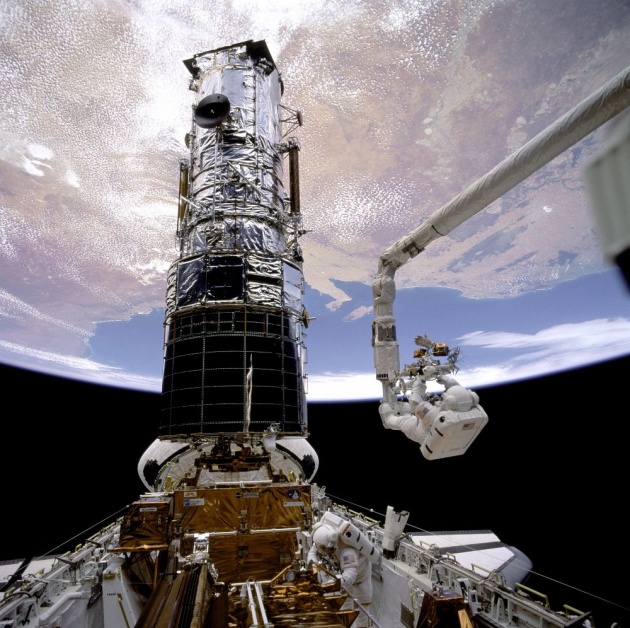
Image Credits: Freerange Public Domain Archives Via freerange
Before to hunt for a planet, it's important to observe it; this is obvious but planets don't emit light, differently from the stars, so observing directly a planet is impossible. How can we detect a planet if it doesn't emit light?
Before the arriving of Kepler, scientists used a technique known as:
• the radial-velocity method (or Doppler spectroscopy)
How does this technique work? First, it's necessary to point the telescope on a star and record the spectrum of the light emitted by it. Its light, traveling through the atmosphere of the star is partly absorbed and, therefore, its spectrum will present some dark areas. Since the stars, although much larger than the planets orbiting around them, perceive the gravitational force of their planets, they move on very small orbits and, consequently, their emission spectrum will change; sometimes it will be closer to the red zone, sometimes to the blue one. So, if scientists notice that the spectrum of a star they are observing is variable, it means that around the star there is an orbiting celestial body that does not emit light, maybe a planet. It's possible to calculate the mass of the planet by measuring the speed of the star along its orbit.
The arrival of Kepler brought a new and more effective technique called:
• The transit photometry method
The telescope constantly stares at a huge amount of stars in front of itself and continuously monitors the brightness of each one. If and when the brightness of a star decreases for a certain period of time, then it means that a celestial body has passed in front of the star. The amount of light loss depends on the size of both the star and the planet and the duration of the transit depends on the distance of the planet from the star and the mass of the star. From these data it is possible to calculate the dimensions of the planet. Radius, mass and density of the planet are deduced from transit photometry and Doppler velocimetry techniques.
These parameters are important since they give us an idea about the habitability of the planet. From the distance of the planet from the star, we can deduce the heat that the planet receives from the star and therefore the temperature on its surface. The atmospheric composition is studied through spectroscopy techniques; during the transit, in fact, the light of the star crosses the atmospheric boundary of the planet and the resulting light is filtered. The analysis of this light shows both the structure and the composition of the atmosphere.
When is an exoplanet habitable?
Astronomists are collecting data to classify all the planets they're currently observing. An exoplanet, to be habitable, must be similar to the Earth.
An exoplanet is similar to the Earth when:
- it has similar dimensions, since the probability that it is rocky is high and, moreover, it would retain the atmosphere, which protects us from the cosmic rays;
- It is distant enough from its star to be able to maintain water in the liquid state and the atmosphere;
- The surface is walkable;
- It has watery clouds and liquid oceans and lakes.
Although we can detect exoplanets and estimate with a good error margin their dimensions, orbital period, age and distance from their star, the current technologies do not allow us to analyze the composition of the atmosphere with precision; this is clearly a fundamental parameter for classifying the planet as habitable or not. These problems should be reduced with the arrival of the space telescope James Webb.
The challenges
Distance
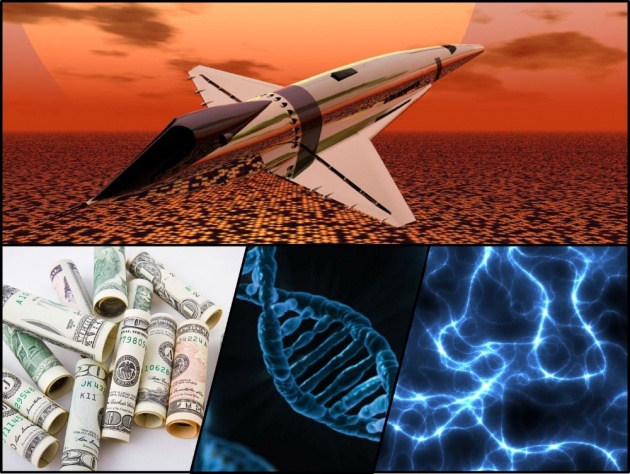
Image edited by Pixor. Original Images Credits: Serendigity Via flickr, TheDigitalArtist Via Pixabay, NikolayFrolochkin Via Pixabay, PublicDomainPictures Via Pixabay
The biggest and the hardest problem to solve is the enormous distance between our planet and the potentially habitable ones. One light-year corresponds to 9,460,700,000,000 km, that is more than 5800 billions of miles. With the current vehicles, whose speeds are not adapt for interstellar travels, we can't go far. The problem of the huge distance to travel rises several other problems:
-
Vehicles
We have to develop new technologies that allow us to travel long distances with spaceships, designed to survive for long periods in space;
-
Energy
We have to find the right fuel for such a spaceship; the most efficient one is the antimatter but its production is still a scientific challenge.
-
Financial resources
The construction of such a spaceship would represent a colossal economic investment, which would require the greatest act of generosity of the whole history of humanity by the richest men, or the investment of the travelers themselves.
-
Medicine
If we traveled at 5,000 times faster than the Voyager-1 probe (90,000 km / h), we would reach the nearest solar system (Proxima Centauri) in 73 years. A whole generation should live in Space for the whole life; certainly, sending newborns into Space and preparing them to colonize the new system at the age of 73 it is unthinkable for a lot of reasons, among which the ethic one. Therefore, the need arises to prolong the life of a man to support such a journey. In the next 1000 years, genetic engineering will make us live longer, be more intelligent, have a radiation-resistant skin, the ability to breathe atmospheres that are currently poisonous and a greater resistance to infections. We will also be able to produce artificial life forms with synthetic DNA.
Finally, with such a technology, we will be able to design spacecraft able to divide and disperse in Space; it would be the most massive dispersion of life ever and the greatest colonization of history.
On the final note
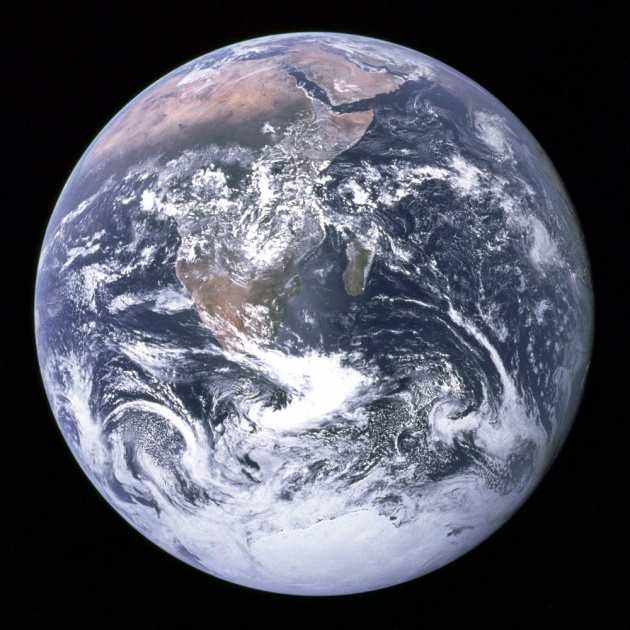
Image Credits: Freerange Public Domain Archives Via freerange
Earth is the rarest and most particular planet in the known Universe, it has all the ingredients to produce and preserve the life. Since the end of the dinosaurs Era, it has been able to regenerate the life and one of the species that evolved: the Homo Sapiens Sapiens, within ten thousand years, conquered the world and changed it, according to its necessities. The development of Science and technologies allowed us to discover always more about the story of our planet and beyond, till the beginning of everything: The Big Bang. Although we are a very young species we have been able to found thousands of answers to the spontaneous questions about Nature, Universe, our planet and our destiny; one of those answers, unfortunately, is not good: our planet won't live forever. If we want to preserve our species and save ourselves from the extinction we have to develop high technologies in order to move toward new safer planets, solar systems, galaxies and start the colonization of the Universe. In this way, our species will live everywhere, and even if in thousands of billions of years it will be different, since the evolution will have optimized the species in order to allow it to live on the planet in which it has been settled, they'll know that everyone comes from an ancient version of humans who lived on a little blue planet somewhere in the Milky Way, which doesn't exist anymore.
Video Credits: Mysterious Universe Via YouTube
Thanks for reading, my friends. Future is coming.
Here, there is a Querlo Chat which you could find useful.
▓▄▀▄▓▀▄▀▓▄▀▄▓▀▄▀▓
Written for Bitlanders
by Pixor
Thanks for your attention.
Pixor, student in electronic engineering at the Polytechnic University of Bari, Italy. Curious and passionate about science, technology, animals, travels, history and music.
Here there are my BLOGS.
¤¤¤¤¤¤¤¤¤¤¤¤¤¤¤¤¤¤¤¤¤¤¤¤¤¤¤¤¤¤¤¤¤¤¤¤¤¤¤¤¤¤¤¤
Do you like writing?
Do you want to become a blogger and earn from your blogs?
So, subscribe to bitlanders by clicking HERE and join our big family.
¤¤¤¤¤¤¤¤¤¤¤¤¤¤¤¤¤¤¤¤¤¤¤¤¤¤¤¤¤¤¤¤¤¤¤¤¤¤¤¤¤¤¤¤
You may also read:
• Holidays in Apulia: what to see, where to go, what to know
• The Majorana particle finally captured. What will happen now?
• Graphene: the material of wonders
• Enigma: the story of the cipher machine that changed the world
• Festa del Soccorso: one of the craziest celebrations in the World



